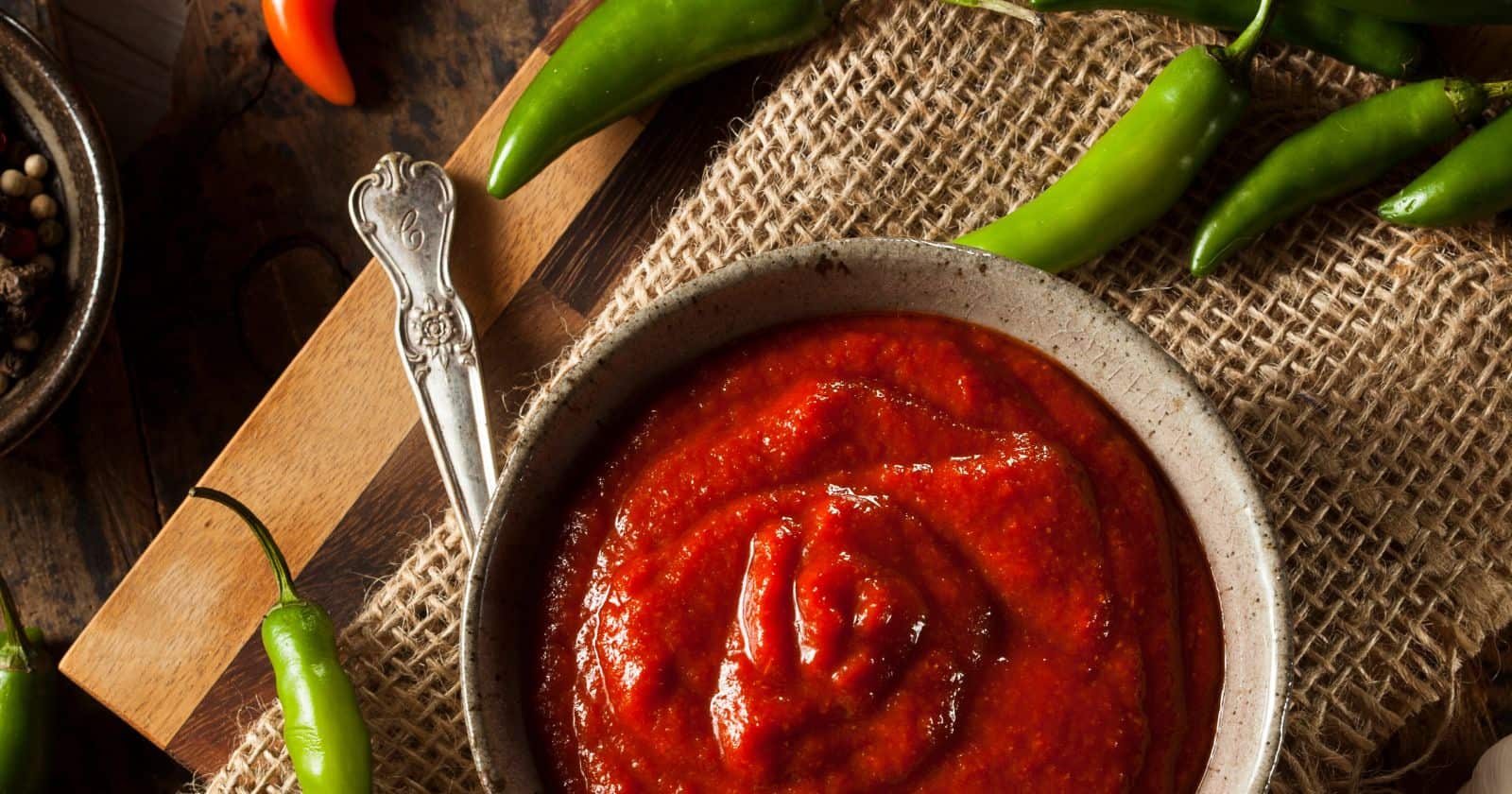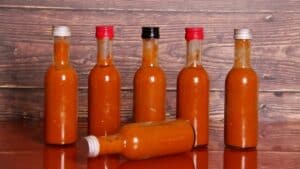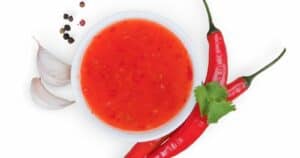Is that bottle of fiery hot sauce sitting on your table just a sprinkle of
But is hot sauce technically categorized as a condiment? With so many varieties and flavor profiles ranging from tangy to smoky to fruity, what exactly makes a hot sauce a condiment? In this post, we’ll look at why this spicy tabletop staple is very much considered a condiment in its own unique category. We’ll also explore the wide world of hot sauces and the many ways they can transform dishes as more than just occasional sprinkles of
Whether it’s a homemade pepper sauce or a flavorful bottled variety, hot sauce checks all the boxes of a true condiment. Let’s look at why this versatile and addictive spicy sauce deserves a prime spot at the condiment table.
What Makes a Condiment a Condiment?
Before determining hot sauce’s status, let’s look at what qualities make any food item a true condiment:
- Adds flavor – Condiments infuse new tastes to enhance other foods.
- Served alongside – They accompany rather than get cooked into dishes.
- Adds moisture – Many condiments contribute moisture or richness.
- Small amounts used – Just a bit amplified flavor.
- Tabletop staple – Condiments sit ready on tables.
- Versatile uses – They complement many different foods.
- Elevates overall dish – Brings the meal to the next level.
So does hot sauce provide those condiment qualities? Let’s see how this spicy sauce stacks up.
Hot Sauce Checks All the Condiment Boxes
When we evaluate hot sauce against the defining standards above, it’s clear this fiery tabletop staple fully deserves condiment status:
Adds Significant Flavor
The #1 job of any condiment is amping up flavor, and hot sauce brings this in droves. It provides a robust blast of chili pepper taste along with aromas and added depth from ingredients like garlic, spices, vinegar, and more.
Typically Served Alongside Foods
Hot sauce is designed to be shaken or drizzled directly onto prepared dishes to
Contributes Moisture and Richness
Many hot sauces have a thick, saucy texture and viscous cling thanks to ingredients like tomato, pineapple, mango and more. This adds both moisture and richness when drizzled on.
Used in Small Amounts
A few shakes or dashes of hot sauce is all you need to impart flavor. A little goes a long way thanks to potency of chilies.
Table Necessity
Is there a table setup complete without a bottle of hot sauce on standby? For many, it’s an essential condiment right alongside staples like ketchup.
Perfect Partner to Many Foods
Hot sauce complements and enhances everything from fried and grilled dishes to soups, eggs, sandwiches, dips and more. It’s a versatile flavor booster.
Elevates Overall Taste Experience
That unique chili pepper heat and tang punches up any dish, taking it from boring to lively and crave-worthy in just a few shakes.
So by all definitions, hot sauce checks every box required to be considered a legitimate condiment. Let’s look closer at this spicy staple’s history.
A Spicy History: Origins of Hot Sauce
To better understand hot sauce’s significance as a condiment, it helps to look at its origins. Chili-based sauces can be traced back thousands of years to prehistoric times in Mesoamerica, where hot peppers were part of indigenous cuisine.
The Aztecs in what is modern-day Mexico used chilies mixed with other seasonings to create the earliest recorded hot sauces. These spicy concoctions enhanced flavor in meats, stews, and other dishes.
Spanish and Portuguese explorers then brought peppers and the concept of chili-spiked sauces back to Europe. From there, recipes spread across the world over centuries and evolved into countless regional hot sauces.
In America specifically, hot sauces surged in popularity in Louisiana and throughout the South. TABASCO® brand pepper sauce debuted in 1868 and remains one of the most ubiquitous and beloved hot sauces today.
So hot sauces were born as condiments meant to add flavor dimension to foods. And they continue to play that indispensable condiment role today.
Tips for Using Hot Sauce as a Condiment
Now that you know hot sauce is hands down a condiment, how do you make the most of it? Here are tips for harnessing the flavor power of hot sauce to take any dish next level:
Keep Multiple Styles on Hand
With endless varieties and flavor profiles, why limit yourself to just one hot sauce? Try an assortment like:
- Louisiana-style – Vinegary tang perfect on seafood
- Mexican-style – Smoky flavors for tacos, burritos
- Caribbean-style – Tropical and fruity for chicken and pork
- Asian-style – Garlicky heat for noodle and rice dishes
Shake, Drizzle, and Sprinkle as Desired
The beauty of hot sauce is you control the amount of heat and flavor. Shake on just a bit, drizzle for bolder impact, or sprinkle for a mild accent.
Use Beyond Heavily Spiced Cuisines
Sure, hot sauce is great with Mexican and Indian foods. But don’t stop there. Liven up eggs, pizza, sandwiches, dips, dressings, and more with a few shakes.
Mix with Mayo, Sour Cream, Etc.
For a quick flavored dip or sandwich spread, blend hot sauce into mayonnaise, sour cream, cream cheese, or ranch dressing.
Add to Marinades and Rubs
Mix a teaspoon or two of hot sauce into wet marinades, dry rubs, and spices when seasoning meats before cooking.
Drizzle on Vegetables
Wake up roasted, grilled, or sautéed veggies like cauliflower, zucchini, or green beans with some hot sauce drizzled over the top.
Spike Dressings and Sauces
Stir a dash or two of that chili flavor into any dressing, sauce, soup, stew, or dip recipe for extra dimension.
Customize Heat Level
Control the burn by how much hot sauce you use. Add just a few drops for mild tingle or up to 1-2 tablespoons for fiery intensity.
Combine Flavors
Mix hot sauces creatively with other condiments like BBQ sauce, teriyaki sauce, and honey mustard for signature flavor combos.
So don’t save that hot sauce just for the occasional taco. Unleash its full condiment potential to amplify flavors across meals and dishes.
Frequently Asked Questions
1. What are some of the most popular styles of hot sauce?
Some of the most popular types include Louisiana-style, Mexican-style, Caribbean-style, Asian-style, and habanero hot sauces. Popular brands like Tabasco, Cholula, Sriracha, and Frank’s RedHot also have their own signature flavor profiles.
2. Does hot sauce need to be refrigerated after opening?
Most hot sauces can be stored at room temperature after opening. However, fresh hot sauces containing raw vegetables or fruits should be refrigerated to extend shelf life. Also refrigerate any artisanal sauces using natural preservatives.
3. How long does an unrefrigerated hot sauce last after opening?
An unrefrigerated hot sauce will typically last around 3 years past its printed expiration date. Properly stored, the flavor and heat should remain intact during that time.
4. What’s the difference between chili peppers and pepper flakes in hot sauce?
Chili peppers are used fresh and then cooked into the hot sauce. Pepper flakes are made from peppers that have been dried and crushed into small pieces before being added to the sauce.
5. Can you substitute hot sauce for chili peppers in recipes?
Yes, you can substitute a teaspoon of hot sauce for every chili pepper a recipe calls for. Start with less hot sauce and add more if needed to achieve the desired level of heat.
Let me know if you have any other hot sauce questions! I’m happy to help fellow condiment lovers get the most out of this amazing spicy staple.
The Definitive Condiment
When looked at against the standards that define true condiments, hot sauce checks every box. It brings customizable flavor enhancement,
This historic fiery tabletop staple was born as a condiment, and it continues to be one of the most indispensable ones today. A dash of that chili pepper tang makes dishes pop unlike anything else.
So embrace hot sauce as the definitive spicy condiment it is. Shake on that flavor transformation and take your meals to the next level!





